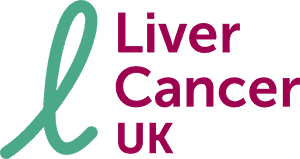In 8 out of 10 people (80%), it isn’t possible to completely remove bile duct cancer because:
- it has grown too far from where it started, or has spread to nearby lymph nodes or other body organs
- you have a liver condition or other medical history that means the surgery would be too much for you
Your treatment will depend on how the cancer is affecting you. You may have:
- chemotherapy
- radiotherapy alongside chemotherapy
- surgery to relieve symptoms of a blockage in your bile ducts
Chemotherapy
If you can’t have the cancer removed, your doctor may suggest chemotherapy to try and shrink it. Most people just call this ‘chemo’. This won’t cure the cancer, but it may control it for a while.
Unfortunately this type of treatment won’t help everyone. But doctors can’t tell beforehand who will respond to it. So they may suggest trying it and then stopping if tests show that the cancer is continuing to grow. It’s best to talk over with your doctor what the likely benefits and side effects will be before you decide.
The treatment you are most likely to have is a combination of 2 chemo drugs called:
- gemcitabine and
- cisplatin
You have this treatment through a drip (intravenous infusion). So you have to go to the hospital outpatients department. You have treatment once a week for 2 weeks, followed by a week off. This 3-week period is called a cycle of treatment. How many cycles you have will depend on how much the chemo is helping.
Common side effects of chemo include:
- increased risk of infection
- feeling or being sick
- feeling very tired (fatigue)
Some side effects are specific to particular chemo drugs. With these, you are likely to have hair loss and may have a rash. This treatment can also cause kidney damage and changes to your hearing.
Before each treatment, your doctor will do a blood test to check how well your kidneys are working. You may have ringing in the ears (tinnitus). Like other side effects, this usually goes away after treatment is finished – but do tell your doctor straight away if you notice any hearing issues. They may need to adjust your chemo dose.
There is more about chemotherapy and its side effects in the general liver cancer treatment section.
Radiotherapy
Your doctor may suggest a course of radiotherapy after your chemotherapy. Your doctor may also suggest it as a treatment for symptoms of bile duct cancer.
Radiotherapy means having high energy X-rays directed at the cancer. Like chemo, radiotherapy kills dividing cells, so cancer cells are more sensitive to it than normal cells.
Radiotherapy after chemo isn’t a standard treatment for bile duct cancer. But your doctor may suggest it if they think it would help you. There is a clinical trial looking into how well this works for bile duct cancer that can’t be removed.
Having the treatment is a little like having an X-ray. You can’t feel it and each treatment takes a few minutes. You have treatment once every 1 or 2 days, over 3 or 4 weeks. Your cancer specialist will tell you exactly how many treatments you’ll have. Beforehand, you’ll have a longer appointment for radiotherapy planning. This involves having a scan, which the radiotherapist will use to work out exactly where to direct the treatment.
There is more about radiotherapy in the liver cancer treatment section.
Relieving a blocked bile duct
If your cancer is blocking the flow of bile, your doctor may suggest putting in a ‘stent’. This is a thin metal tube that can be put into a blocked duct to allow the bile to flow again.
Stents are also used for advanced cancer, so there is more information about having a stent on the next page in this section. Having a stent put in [LINK advanced cancer treatment #stent] doesn’t mean you have an advanced cancer.
Content last reviewed: October 2022
Next review date: October 2025
